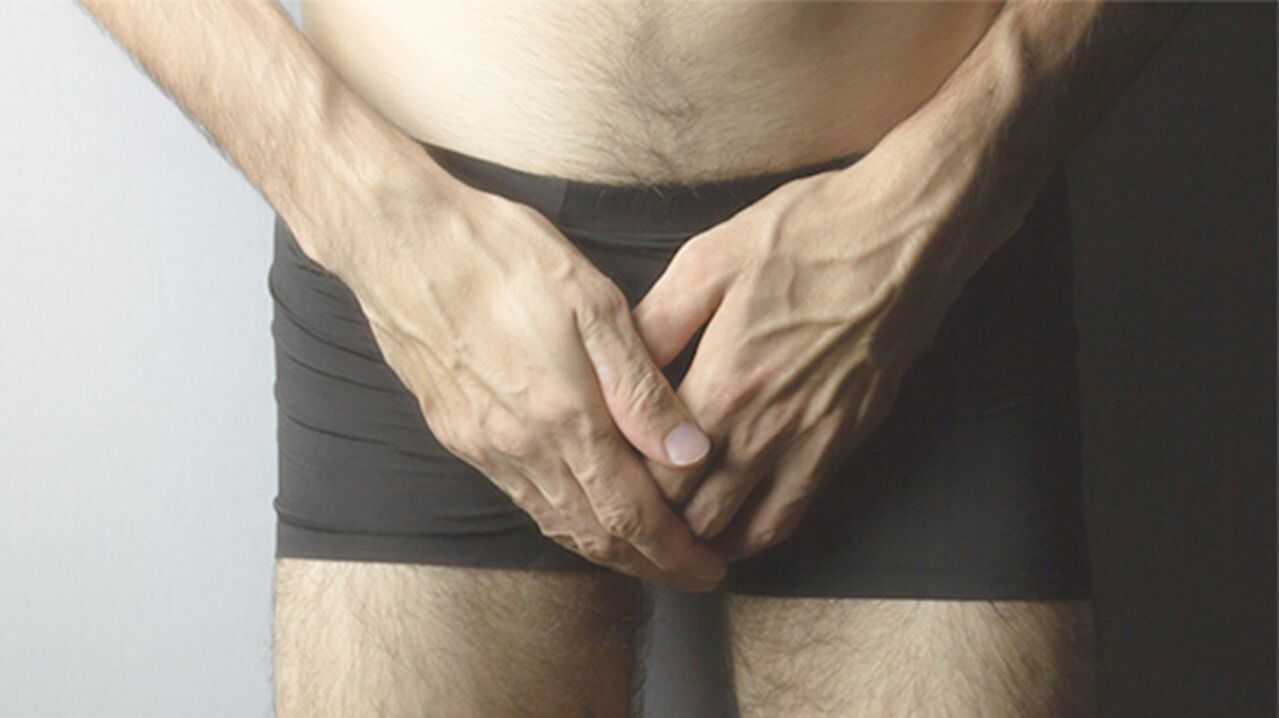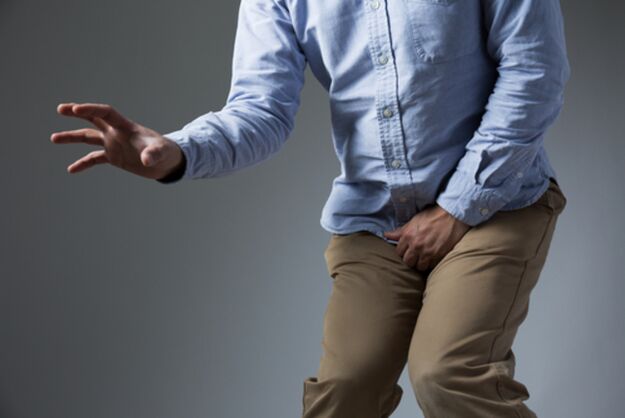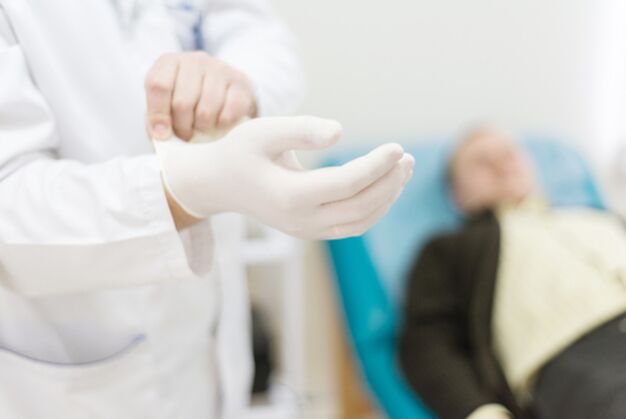
According to statistics, about 40% of men with symptoms of prostatitis do not see a doctor. At the same time, the consequences of the disease in which there is a risk of male infertility are very serious. Find out what symptoms you should see your doctor and what to do to avoid getting sick.
What is prostatic disease
Prostatitis is an inflammation of the prostate gland, also known as the prostate gland, which is one of the most common "male" diseases. Prostatitis is very different, they can occur due to infection and without it, due to insufficient and excessive sexual activity, etc. v. This article will help you understand the basic nuances of the disease.
About 10% of men experience symptoms of chronic prostatitis, but only about 60% of them seek medical help (Nickel JC et al. , 2001).
Prostatitis affects men of all ages and the prevalence of this disease continues to increase. Males under the age of 50 account for 65. 2% of patients, according to various sources, the prevalence of the disease in men is generally 13, 2-35% (Lummus W. F. , 2001; Meares E. M. , 1990). According to other data, 8-35% of men 20-40 years old have prostatitis. In older men, the picture was actually "masked" by the incidence of prostate enlargement (prostate adenoma), as their symptoms were mostly the same. Up to 65% of adenoma patients undergo surgery for undetected prostatitis. (Nickel JC et al. , 2007). Given that inflammatory genital diseases are a common cause of male infertility, scientists speak of a threat to the nation's reproductive health.
What is prostatic disease
The simple division into acute and chronic is not sufficient to characterize prostatitis, which includes a number of syndromes with a different clinical course. Consider which diseases have been identified according to the modern taxonomy (Krieger JN et. Al, 1999).
Type I: Acute bacterial prostatitis. . . A relatively rare species, accounting for only 5% of cases. It is a consequence of urinary tract infections, which develops on the basis of pathogenic factors (impaired urine flow, suppressed immunity). In 5% of cases, it turns into chronic bacterial prostatitis.
Type II: Chronic bacterial prostatitis. . . It is also a rare disease that is considered a recurrent urinary tract infection with the main focus on the prostate gland.
Type III: Chronic prostatitis / chronic pelvic pain syndrome. . . It was formerly known as chronic bacterial prostatitis, and it accounted for 95% of all diagnosed prostatitis (Habermacher GM, 2006). Chronic pain syndrome combines pathologies that are characterized by urinary pain in the absence of a urinary tract infection. It does not include urethritis, cancer, urethral stenosis, bladder nerve damage. Divided into categories IIIa and IIIb: there are signs of inflammation and no signs of inflammation. These signs are determined by a laboratory, mainly by the presence of leukocytes in the urine or secretions of the prostate gland.
Type IV: Prostatitis due to asymptomatic inflammation. . . It was an accidental finding when examining a patient. It is often diagnosed when examining men for infertility or elevated levels of the PSA marker in the blood. We do not review this form in detail, as scientists have yet to develop a consensus view on this form (Nickel JC, 2011).
Symptoms of prostatitis
Symptoms of acute prostatitis
The disease begins acute, there is pain in the epithelium, the body temperature rises. Frequent urination (at least 5-7 times / night), painful urination. Partial urine output, no feeling of satisfaction when urinating. Blood can be found in the last part of urine. The pain gets worse when having a bowel movement. This is a serious illness that requires urgent help.
Complications of acute prostatitis are:
- Acute urinary retention;
- prostate abscess (forming a purulent focal point);
- prostatitis (inflammation of the tissue around the gland, possibly due to a breakthrough abscess);
- phlebitis of the semi-venous plexus (inflammation of the surrounding veins).

Symptoms of chronic prostatitis
All types of chronic prostatitis (both chronic and bacterial pelvic pain syndrome) are similar. The picture of the disease is diverse, below is a list of possible symptoms of varying severity.
- Pain:
- pain or discomfort in one of the characteristic areas (groin, groin, testicles, penis, lower back, abdomen, rectum);
- pain with urination or increased pain when urinating;
- pain during or after ejaculation;
- increased sensitivity of the muscles in the perineum;
- nerve pain;
- pain caused by irritated bowels.
- Urinary symptoms:
- lower urinary tract symptoms (LUTS) related to emptiness (wanting to empty the bladder, uncontrollable, urge to urinate, nocturia, pain when urinating);
- LUTS involves obstruction (weak urine pressure, intermittent flow, needing);
- burning sensation in the urethra;
- recurrent urinary tract infection.
- Sexual dysfunction:
- erectile dysfunction;
- violation of ejaculation (premature or slow ejaculation, with blood in the semen);
- decreased libido.
- Psychosocial symptoms:
- worry;
- Depression;
- cognitive and behavioral impairment;
- poor quality of life.
Men with chronic pelvic pain syndrome are more likely to experience psychological stress and sexual dysfunction (A. Mehik, 2001).

If you experience symptoms of prostatitis and chronic pelvic pain syndrome, you should see a urologist or a male practitioner. In the case of severe symptoms of acute prostatitis, you should go to the emergency room to prevent urinary retention and other complications.
Causes of prostatitis
Prostate inflammation develops under the influence of many factors. A healthy gland in the absence of pathogenic factors is capable of fighting infection and inflammation. The disease easily starts due to a decrease in immunity, a violation of the outflow of secretions from the prostate gland, inadequate sexual activity, difficulty in passing urine and impaired blood circulation in regional organs. pot. Other risk factors include cold climate, alcohol abuse and sedentary lifestyles.
Acute prostatitis is an inflammatory disease caused by bacteria, its most common pathogens are Escherichia coli, Proteus, Pseudomonas aeruginosa, Enterobacter and several others. The disease develops when the infection enters the gland with urine excretion, due to the progressive infection, via lymph from the rectum, or blood from other infectious foci. Sexual transmission of germs plays an important role.
Risk factors for acute bacterial prostatitis:
- phimosis;
- Urinary tract infections;
- acute epididymitis (epididymitis);
- unprotected anal intercourse;
- bladder catheterization;
- operations performed through the urethra;
- prostate biopsy;
- violation of the secretion and excretion of prostate fluid.
The risk factors and pathogens of bacterial chronic prostatitis are similar to those for acute. Of particular importance are the causative agents of genital infections: Trichomonas, chlamydia, ureaplasma, mycoplasma.
Chronic pelvic pain syndrome is not currently considered a homogeneous disease; It is difficult for doctors to determine its main cause. In just one third of these patients, a biopsy reveals inflammatory changes in the prostate gland. It is believed that a leading role in its development is due to immune, neurological and endocrine disorders.
Among the causes of the syndrome are considered by scientists:
- infection
- Autoimmune disorders;
- chemical inflammation due to penetration of urine;
- disorders of the immune system;
- throw urine into the ducts of the prostate gland;
- pain of the muscles of the pelvic floor due to their pathological stress;
- nerves entangled;
- Psychological stress.
Diagnosis of prostatitis
Diagnoseacute prostatitisis based on:
- complaints;
- medical examination;
- urine tests, including bacterial cultures to identify pathogens.
In uncomplicated cases, a prostate scan is usually not required. An ultrasound of the rectum (ultrasound) or computed tomography (CT) of the pelvis is done if the urinary retention is severe and if prostate abscess is suspected. PSA testing is also not recommended, as in acute illness its level will increase in all cases. Prostate biopsy is contraindicated due to pain and a high risk of complications.
To facilitate diagnosischronic prostatitisDoctors use a number of special questionnaires that outline the history of the disease, changes in quality of life, and detail symptoms. During examination, the doctor palms the abdomen, carries out a digital examination of the prostate gland (through the rectum), evaluates the condition of the pelvic muscles. In most cases, the diagnosis is made on the basis of a physical examination and examination of the bacteria and clinically of the urine or semen. Criterion for the diagnosis of chronic bacterial prostatitis is a history of recurrent urinary tract infection and a 10-fold increase in the level of bacteria in prostate secretions, semen culture or post-urine analysis. prostate massage (Budía A; 2006).
If the analysis of prostate and urine excretion does not provide sufficient information in the presence of symptoms of chronic prostatitis, the following additional studies are performed:
- Sample 2 glasses (analysis of urine to determine the site of infection);
- 4-glass sample;
- the flow rate of urine;
- determination of residual urine output;
- Cytological analysis of urine.

In differential diagnosis (to rule out prostate stones, abscesses, cancer), the following tests are also used:
- sow a stain from the urethra;
- screening for sexually transmitted diseases;
- analysis for PSA;
- urinary flow measurement;
- cystoscopy;
- prostate biopsy;
- retrograde urethral scan;
- Kidney ultrasound;
- magnetic resonance imaging, computer tomography.
Treatment of prostatitis
Treatment of bacterial prostatitis
Ideally, antibiotic therapy should be based on bacteriological data. But usually it starts before a result, assuming that the most common pathogens are gut bacteria. According to the European guidelines for the treatment of urinary tract infections, the drugs of choice for the treatment of acute and chronic bacterial prostatitis are fluoroquinolones, macrolides, and tetracyclines. Once the pathogen is identified, the antibiotic can be replaced.
Acute bacterial prostatitis sometimes requires surgical treatment. In the case of an abscess, surgery is performed either through the rectum or through the urethra. In the case of acute urinary retention, when the tube cannot be inserted through the urethra, surgery to remove the bladder must be performed, placing the tube through the abdomen above the pubic bone.
Complementary treatment for acute prostatitis includes pain relief, fever reduction, drinking plenty of fluids, and stool softeners. Alpha blockers are also used to improve urine flow. After treatment for acute prostatitis, patients should abstain from sexual intercourse for a week.
Treatment of Chronic Prostatitis / Chronic Pelvic Pain Syndrome
As we have pointed out, the cause of this syndrome is difficult to determine. Hence the difficulties in choosing therapy. Usually, doctors initiate treatment with the appointment of 1-2 drugs, which can be changed if not effective enough. The European Guide to Chronic Pelvic Pain Management offers the following drugs and treatments:
- Alpha-blockers relax the bladder and prostate, significantly reducing symptoms.
- Antibiotics may also be prescribed because experimental experience shows they can be effective.
- Anti-inflammatory drugs improve quality of life and relieve pain.
- 5-alpha reductase inhibitors reduce the symptoms of prostatitis.
- Muscle relaxants have effects similar to alpha blockers.
- Phytotherapy. The bioflavonoid quercetin and several other drugs relieve pain through its anti-inflammatory and antioxidant properties.
In the chronic pelvic pain syndrome, a placebo provided a 30% reduction in symptoms (D. A. Shoskes, 1999)
Treatment without medication:
- Massage the prostate gland. It is performed with one finger through the rectum, courses are recommended 1-3 times a week for 3-4 weeks.
- Physical method:
- electromagnetic therapy;
- microwave heat therapy;
- external shock wave therapy.
- Surgical treatment includes laparoscopic cervical incision, prostatectomy and even prostatectomy if other methods are not successful. This treatment is rarely used.
- Psychological treatment. The decline in the patient's quality of life and difficult attitudes in the face of circumstances require the intervention of a psychologist.
Prevent
To warnacute prostatitisneed timely treatment of all urinary diseases, remember a safe sex life, avoid inflammatory diseases of genital organs. Partial prevention should be performed by doctors without appointing unnecessary invasive procedures (biopsy, cystoscopy) and complete cure of urinary tract infections.

The main points of the prevention of chronic prostatitis:
- Personal hygiene. To prevent infection, intimate areas need to be kept clean.
- Physical activity. When sitting for a long time, blood in the pelvic area becomes stagnant, which can lead to prostatitis. You need to get up and move at every opportunity. Aerobic, stretching exercises are effective. Among other things, physical activity reduces anxiety that is often associated with prostatitis.
- Normal sexual activity appropriate for age.
- Liquid. You need to drink enough to help flush the bacteria out of the urinary tract.
- Diet. Prostate-stimulating foods should be limited: coffee, tea, carbonated beverages, spices, pickles, canned foods, fried foods, and alcohol. Should increase the proportion of fruits and vegetables in the diet. These recommendations are also important in the treatment of the disease.
- Maintain a reasonable weight.
- Stress management. To do this, you can talk to a therapist (psychotherapist), learn to relax.
- Have safe sex to prevent infections.
- Avoid hypothermia.
- Seek medical attention promptly when dangerous symptoms appear: painful urination, urinary incontinence, lower abdominal discomfort and episiotomy.



























